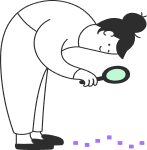Do you want to be fit and strong but don’t have time to spend hours in the gym or lace up your trainers and pound the pavement? Maybe childcare or dangerous weather prevents you from leaving your house. HIIT may be just what you are looking for. You may wonder what all the fuss is about with HIIT and whether it is worth it. Maybe it could be the solution to your fitness obstacles, or a great addition to your existing fitness regime.
Analyse nutritional information for any recipe

But the crux of the matter is this: does HIIT work? Does it deliver on its promises? It’s time to raise the heart rate and get your sweat on to find out.

What is HIIT?
High-intensity interval training – also known as HIIT – is a training process that consists of individual exercises that are short in duration and extremely high in intensity, with rest periods interspersed. HIIT is guaranteed to get your heart pumping with its zero-to-hero approach.
HIIT is usually around 10 – 30 minutes in duration but can be longer. This short time scale means you can squeeze an exercise session in and around a full-to-bursting diary.
You may think of HIIT workouts as being concerned with specific exercises, such as burpees, mountain climbers, and squats, interspersed with rest periods. And to a degree, you would be right. But technically, short and sharp running intervals also fall under the high intensity interval training banner. And even a strength workout can be a HIIT workout if adapted to short, full-on sets with rest in between.
The benefits of HIIT
The benefits of HIIT reach both your physical and mental health. HIIT is an exercise model that doesn’t take up too much of your day and requires no specialist equipment. You can do it anywhere.
In terms of your physical health, HIIT will:
- Increase your strength.
- Improve your heart health.
- Regulate blood pressure and blood sugar levels.
- Strengthen bones.
- Improve stamina.
- Alleviate muscle stiffness.
- Assist in burning fat and aid in weight loss.

Like other exercise, HIIT is also beneficial for your mental health. It can:
- Help relieve stress.
- Promote a healthy body image.
- Increase confidence and self-esteem.
One of the most popular advantages of HIIT is its ability to burn calories and its effectiveness in reducing abdominal fat.
The time efficiency of HIIT exercises is also one of its biggest draws. High intensity interval training exercise routines can produce similar physical adaptations that traditional endurance training elicits. That said, research is ongoing into the optimum intensity, duration, and frequency metrics.
Comparing HIIT and endurance training
A 2006 study by Gibala et al. found a striking result between different training modalities. They divided a group of 16 participants into two groups. The first group performed 10.5 hours total of cycle endurance training. This training took place over two weeks, with each session lasting between 90 – 120 minutes. The second group performed 2.5 hours of HIIT, also over two weeks.
Both groups carried out their exercise over 6 sessions. Tests taken before and after the prescribed training showed a similar physiological adaptation concerning increases in their VO2 max, glycogen levels, and hydrogen ion muscle buffering capacity.
While these results may seem remarkable and in favor of HIIT, please treat them with caution. Yes, it is an excellent addition to your endurance training. But if you are a competitive runner or cyclist, it can not provide the specificity required for your training. Nor can HIIT replicate the environmental or psychological experiences of your primary discipline.
Discover Samsung Food user top recipe categories

How to incorporate it into your fitness regime
HIIT isn’t necessarily a substitute for running or cycling. But it is a great option when time is sparse, or motivation wanes. Or if you just really don’t like running or endurance sports!
You can incorporate HIIT into your weekly fitness routine in several different ways.
- Join a weekly class.
- Buddy up with a friend and hold each other accountable for a session.
- Plan your session and write this up on a whiteboard for easy viewing.
- Use any of the thousands of guided routines on YouTube.
Remember, the aim is low volume and high intensity with periods of rest. So go big or go home.
Remember to train safely
Given the high-intensity element, ensure you warm your muscles up first and consider a cool down to help aid the recovery process.
If you are nursing any niggles or injuries, it may not be wise to put your body through a HIIT session unless you have been given the go-ahead from your doctor or personal trainer.
As with all aspects of fitness training, expect to feel uncomfortable. Your muscles will burn, and your lungs will cry. If this discomfort feels different from usual, consider stopping to prevent an injury.

It’s time to HIIT out at your exercise excuses
Given all the physical and mental benefits associated with HIIT, it is definitely worth the hype.
Next time you find yourself time-poor and unable to get out for your usual run or cycle, consider spending 30 minutes on some HIIT exercises. Your head and body will thank you for it.
Words by Ali Hall



